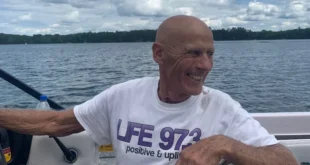A delegation from the Colorado River Indian Tribes in Parker went to Hoover Dam Monday to sign a short-term drought plan that will better manage the available water in the southwestern United States.
The landmark deal will likely prevent the Colorado River reservoirs from being depleted for the next few years, and involved seven western states and the federal government. The river, which supplies water for more than 40 million people, is governed by a series of laws hammered out over the last century of population growth. But more water is allocated than is really available, which means that hard decisions are needed to manage the available water.
CRIT’s water is special in at least two ways. First, it is a ‘senior’ water right, which means that most other entities would be cut before CRIT would. Second, it represents water that actually flows through the CRIT reservation, rather than rights to water that may not exist in reality. This makes it a valuable asset in times of scarcity.
CRIT Tribal Council Chairman Dennis Patch was at Hoover Dam on Monday to sign the deal on behalf of the Tribes.
“These are historic times for CRIT and the State of Arizona as we work side by side with the federal government to combat the current water crisis,” Patch said. “CRIT is not only protecting its water rights, it is setting an example for the rest of the state in terms of conservation and cooperation. The agreement is a critical first step for protecting the life of the river. CRIT’s contribution is especially important because it represents real water as opposed to water that exists on paper. Standing here at Hoover Dam and looking at the lower water levels serves as a stark reminder of the need for this agreement.”
The current water level at Lake Mead is 1,088 feet above sea level, which is around 13 feet higher than the threshold that would trigger a shortage declaration. Recent projections show that a shortage declaration is unlikely in 2020. So, that level of crisis is averted, but more work is needed to secure enough water long-term.
 Parker Live News from the Parker Strip since 2009.
Parker Live News from the Parker Strip since 2009.





Good thirsty